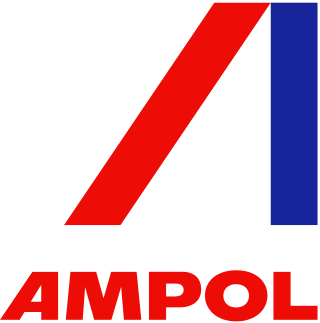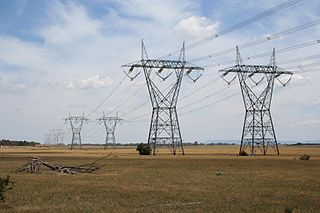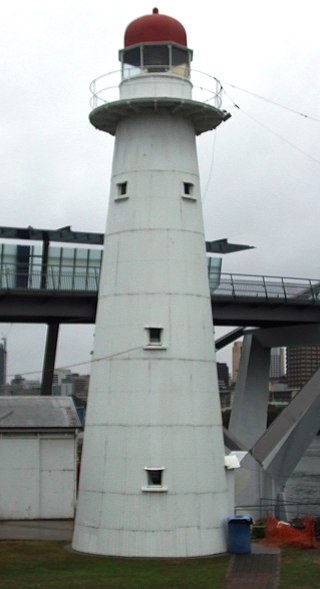
There are many forms of transport in Australia. Australia is highly dependent on road transport. There are more than 300 airports with paved runways. Passenger rail transport includes widespread commuter networks in the major capital cities with more limited intercity and interstate networks. The Australian mining sector is reliant upon rail to transport its product to Australia's ports for export.

Fort Lytton National Park is a national park in Lytton, City of Brisbane, Queensland, Australia. Its main attraction is Fort Lytton Historic Military Precinct, providing guided tours of historic Fort Lytton, a museum and re-enactments. The park was created in 1990 as Queensland's first historic national park. It initially contained only heritage-listed Fort Lytton, a colonial coastal fort that continued to operate as a military base until after the Second World War. The park was extended in 1999 to include Lytton Quarantine Station which occupied adjacent land. The Quarantine Station is also heritage-listed, but is only open to the public on special occasions.

Gheebulum Kunungai is a national park which covers 98% of Moreton Island (Mulgumpin) in Queensland, Australia, 58km northeast of Brisbane. It has three main townships, Bulwer, Cowan Cowan and Kooringal.

Santos Ltd. is an Australian oil and gas exploration and production company, with its headquarters in Adelaide, South Australia. It owns liquefied natural gas (LNG), pipeline gas, and oil assets. It is the biggest supplier of natural gas in Australia, with its plants in the Cooper Basin in South Australia and South West Queensland supplying the eastern states of Australia. Its operations also extend to the seas off Western Australia and Northern Territory.

Pinkenba is a town and eastern coastal suburb within the City of Brisbane, Queensland, Australia. In the 2016 census, Pinkenba had a population of 368 people.

Ampol Limited is an Australian petroleum company headquartered in Sydney, New South Wales. Ampol is the largest transport energy distributor and retailer in Australia, with more than 1,900 Ampol-branded stations across the country as of October 2022. It also operates in New Zealand through its subsidiary Z Energy.

Lytton is an outer riverside suburb in the City of Brisbane, Queensland, Australia. In the 2016 census, Lytton had a population of 6 people.

Energy in Victoria, Australia is generated using a number of fuels or technologies, including coal, natural gas and renewable energy sources. Brown coal, historically, was the main primary energy source for the generation of electricity in the state, accounting for about 85% of electricity generation in 2008. The amount of coal-fired power has decreased significantly with the closure in 2017 of the Hazelwood power station which supplied around 20% of Victoria's electricity, and to a lesser extent with the exit of Anglesea power station in 2015. Brown coal is one of the largest contributors to Australia's total domestic greenhouse gas emissions and a source of controversy for the country. Australia is one of the highest polluters of greenhouse gas per capita in the world.

Queensland's energy policy is based on the year 2000 document called the Queensland Energy Policy: A Cleaner Energy Strategy. The Queensland Government assists energy development through the Department of Energy and Water Supply. The state is noted for its significant contribution to coal mining in Australia. The primary fuel for electricity generation in the state is coal with coal seam gas becoming a significant fuel source. Queensland has 98% of Australia's reserves of coal seam gas. An expansion of energy-intensive industries such as mining, economic growth and population growth have created increased demand for energy in Queensland.

The petroleum industry in Western Australia is the largest contributor to the country's petroleum exports. Western Australia's North West Shelf (NWS) is the primary location from which production originates. Oil exports are shipped from Port Hedland. Notable offshore acreage includes Cliff's Head.

Bulwer is a coastal town and locality at the north-western end of Moreton Island in the City of Brisbane, Queensland, Australia. In the 2016 census the locality of Bulwer had a population of 49 people.

Bulwer Island is a 120 hectares (1.2 km2) reclaimed tidal mangrove island at the mouth of the Brisbane River in the suburb of Pinkenba, Brisbane, Queensland, Australia. It is named for Sir Edward Bulwer-Lytton, the British Colonial Secretary who separated Queensland from New South Wales in 1859 and made Sir George Bowen its first Governor.
Bulwer Island Refinery was an oil refinery on Bulwer Island near the mouth of the Brisbane River in Queensland, Australia. It is now a petroleum import and storage terminal. It was built by Amoco in the 1960s, taken over by BP in 1984 and converted to an import terminal in 2015. It occupies much of the former island. While it operated, it was the largest oil refinery in Queensland.

Bulwer Island Light, also known as Bulwer Island Range Rear Light, is an inactive lighthouse that was on Bulwer Island, in the suburb of Pinkenba, City of Brisbane, Queensland, Australia. In 1983, it was moved to the Queensland Maritime Museum in South Brisbane.

Kwinana Oil Refinery was sited on the shore of Cockburn Sound at Kwinana, near Fremantle, Western Australia. Built by the Anglo-Iranian Oil Company and completed in 1955, it was the largest oil refinery in Australia, with a capacity of 138,000 barrels per day (21,900 m3/d). It was closed by BP in March 2021 to be converted to an import-only terminal.

Lytton Hill is a heritage-listed signal station via South Street, Lytton, City of Brisbane, Queensland, Australia. It was built from 1859 to c. 1945. It is also known as Lytton Redoubt, Reformatory, and Signal Hill. It was added to the Queensland Heritage Register on 25 August 2000.

Viva Energy is an Australian company that owns the Geelong Oil Refinery and retails Shell-branded fuels across Australia under a license agreement. It also owns and retails Liberty Oil and Woodside Petroleum-branded service stations. In total, Viva Energy supplies a network of over 1,330 fuel outlets across Australia. In addition to the Geelong Refinery, it imports fuel supplied by Vitol through 22 import terminals.
The Geelong Oil Refinery is an oil refinery owned and operated by Viva Energy in Corio near Geelong in the Australian state of Victoria. In 2017, it was Australia's second-largest oil refinery, able to process 7.5 billion litres of crude oil per year.
Australia is a major petroleum producer and importer, with a number of petroleum companies involved in upstream and downstream operations. Western Australia is the largest contributor to Australia's production of most petroleum products.

Heavy Anti-Aircraft Gun Station 385 is a heritage-listed former anti-aircraft defence and gun emplacement at 50 Pritchard Street, Lytton, City of Brisbane, Queensland, Australia. It was built from 1943 by the Allied Works Council. It is also known as Lytton Heavy Anti-Aircraft battery emplacement and Gun Station 385. It was added to the Queensland Heritage Register on 28 June 2019.
















